A friend of mine with little experience in (Telelogic Doors) DXL was given a problem to search through a document for objects with possible matches of string.
The problem was :
We have 2 attributes: Severity and Likelihood
Please see the table below for their values:

Edit added (Sample):
A sample document looks as follows

2) So now if I have a combination like Severity = Negligible AND Likelihood = Improbable, then I want to parse through the document and then try to find all the objects that have these values and display the total number of objects.
3) Then I move to the next combination ex: Severity = Minor Injury AND Likelihood = Unlikely and then display the total objects for this combination.
4) So now I go through all the 25 combinations and display the total for each combination.
Trouble is I have no experience of DXL . I know how to do it in C/C++ but not in DXL.
Need a DXL based solution to above.